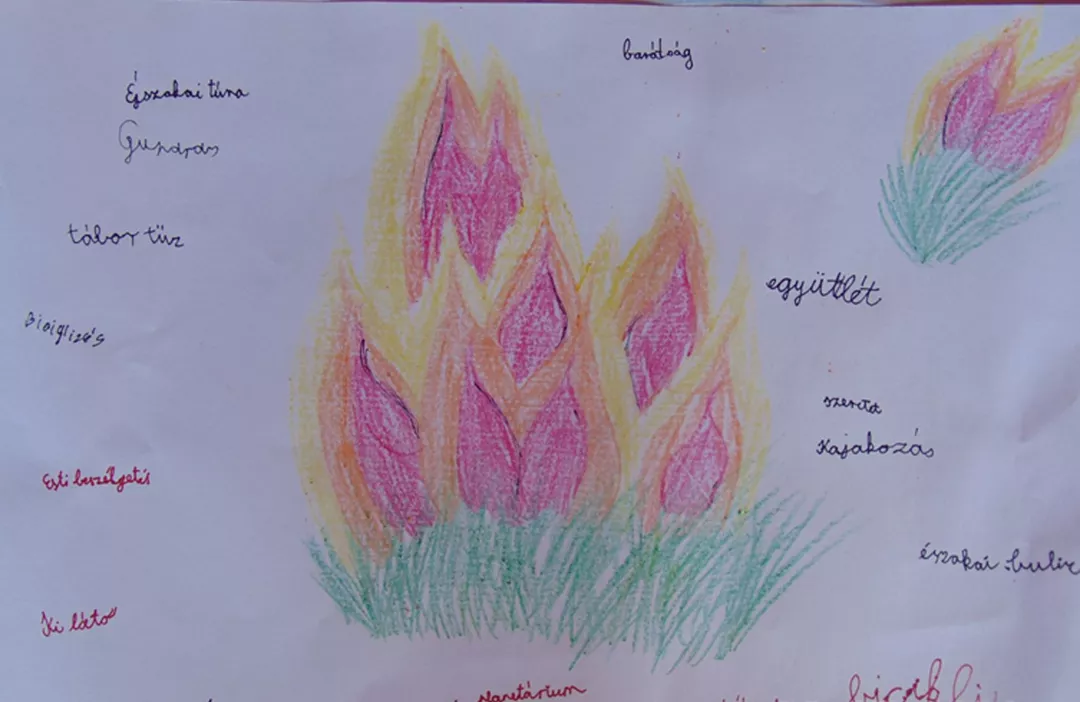General information
RDP Priority
- P6. Social inclusion and local development
RDP Focus Area
- 6B: Local development
RDP Measure
- M19: LEADER/CLLD
Summary
Outmigration of young people is a challenge for Hungary’s North-Ridge micro-region. This area is economically underdeveloped, with few employment prospects and a lack of services. Such problems reinforce and creating obstacles for local businesses. To help reverse this trend, the Mecsek-Völgység-Hegyhát LEADER Local Action Group (LAG) organised a summer camp for school children, where they were offered the opportunity to learn about the local environment, traditions, and heritage of their region. The aim was to strengthen youth bonds with their place of origin. In addition, the project organised shared activities with elderly people to reduce the gap between generations.
Results
The project provided a free summer camp for 100 school children from disadvantaged backgrounds.
It promoted the natural and built landscape, as well as the cultural heritage of North-Hegyhát.
It strengthened the intergenerational bridge between children and the elderly.

Promoter
“Autumn Light” Foundation, through the LAG Mecsek-Völgység
Funding
Total budget 64 181.11 (EUR)
RDP contribution 63 178.57 (EUR)
Private 1 002.54 (EUR)
Ressourcen
Documents
Identity-building camp in the North-Ridge (Észak-Hegyháti) micro-region
(PDF – 1.7 MB)
Links
Context
Hungary’s North-Ridge Micro-region is a small village area located in Hegyhát and Komló, the most disadvantaged districts of Baranya County. Rural areas are becoming increasingly depopulated as young people move to larger urban areas in search of a better income and services. These processes can lead not only to economic decline, but also isolation and the disintegration of local communities, which can lead to an overall deterioration in physical-mental health.
Alsómocsolád, a small village of 320 inhabitants in the Micro-region, is working hard to halt or even to reverse these processes. They implemented several innovative projects that seek to strengthen the local economy, to retain young people, and to develop an active community. In order to make the area attractive for young people they invested in the existing natural, environmental, built and cultural assets. These actions aim to strengthen local people’s sense of identity and develop the local economy while improving access to the services which make rural life easier.
The LEADER Local Action Group (LAG) Mecsek-Völgység-Hegyhát, in cooperation with the Zengő-Duna LAG, implemented the Tourism development in Mecsek project. This project consisted of a series of actions to improve the area’s tourist offer including information portals and signposting; marketing campaigns to promote local products and services; workshops and study tours in cooperation with other villages; and this project - ‘The Identity Formation Camp’ - which aims to engage local young people.
Objectives
The aim of the Identity Formation camp was to strengthen school children’s sense of local identity by familiarising them with their local natural environment, regional traditions and values, and also by building a bridge between young and older generations in the area.
Activities
The Identity Formation Camp specifically targeted primary school children in the Komló and Hegyhát districts. In their application, prospective school-partners were asked to outline an age-appropriate programme that would meet their students’ needs in line with the project’s objectives. Each applicant school could choose to run elements from the accredited Forest School model, as well as other leisure activities that were available. These included an introduction to organic farming, animal husbandry, learning through apps (HolMiApp, Digitális Vándor), and visiting a planetarium, using a plane simulator, canoeing, rowing on the lake, etc. In addition, the project cooperated with the Autumn Light Home for the Elderly, where children could play, talk and listen to stories with the elderly.
Main results
The project provided a free summer camp for 100 school children from disadvantaged backgrounds who would not have been able to participate in a paid camp. The camp helped strengthen the children’s connection with the villages of the area.
It promoted the natural and built landscape, as well as the cultural heritage of North-Hegyhát, thus strengthening the identity of North-Ridge.
The camp strengthened the intergenerational bridge between children and the elderly by cooperating with the Autumn Light home for the elderly and organising joint activities.
Key lessons
A key success factor in the implementation of the summer camps, was the method of requiring applicant schools to oversee the programming of their individual camp activities. This ensured that the children would receive the right level of information and engagement while making effective use of the available human resources to share the workload of planning and implementing the project.
